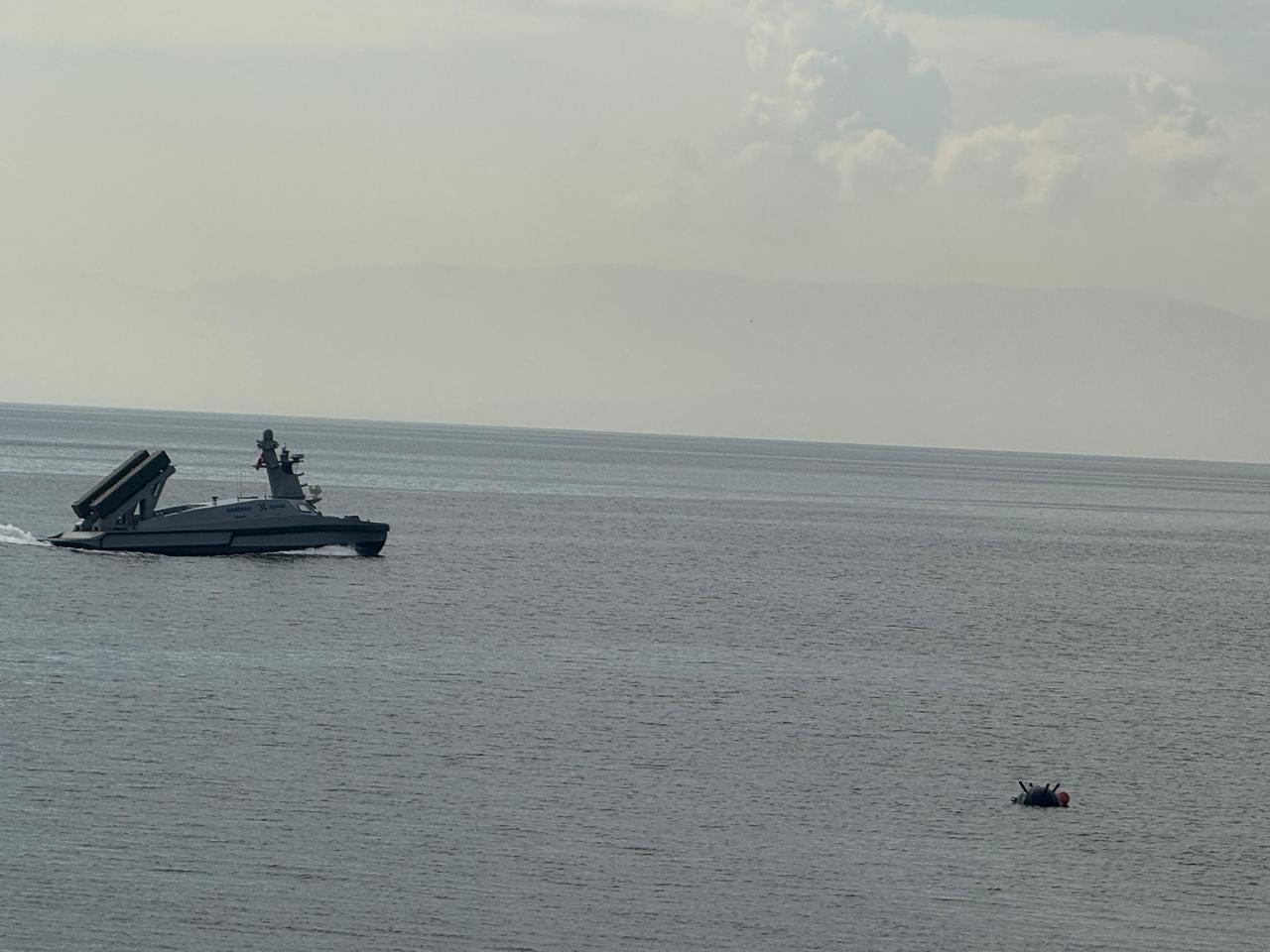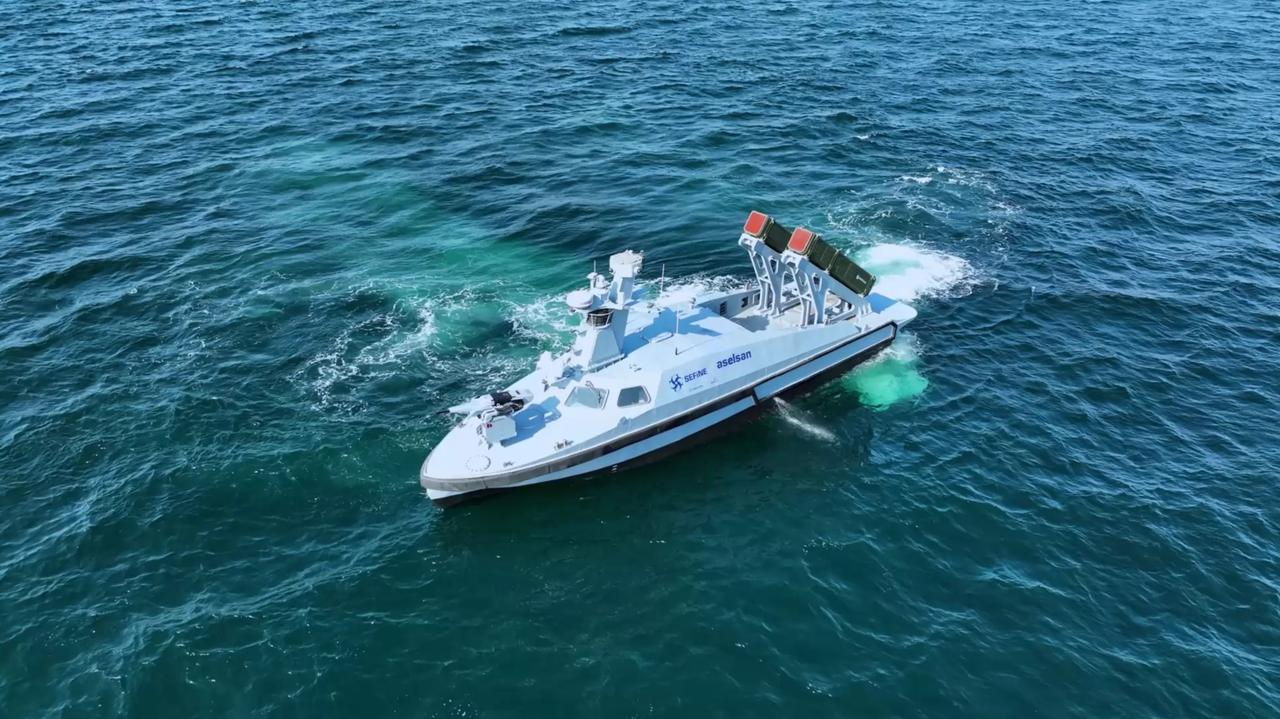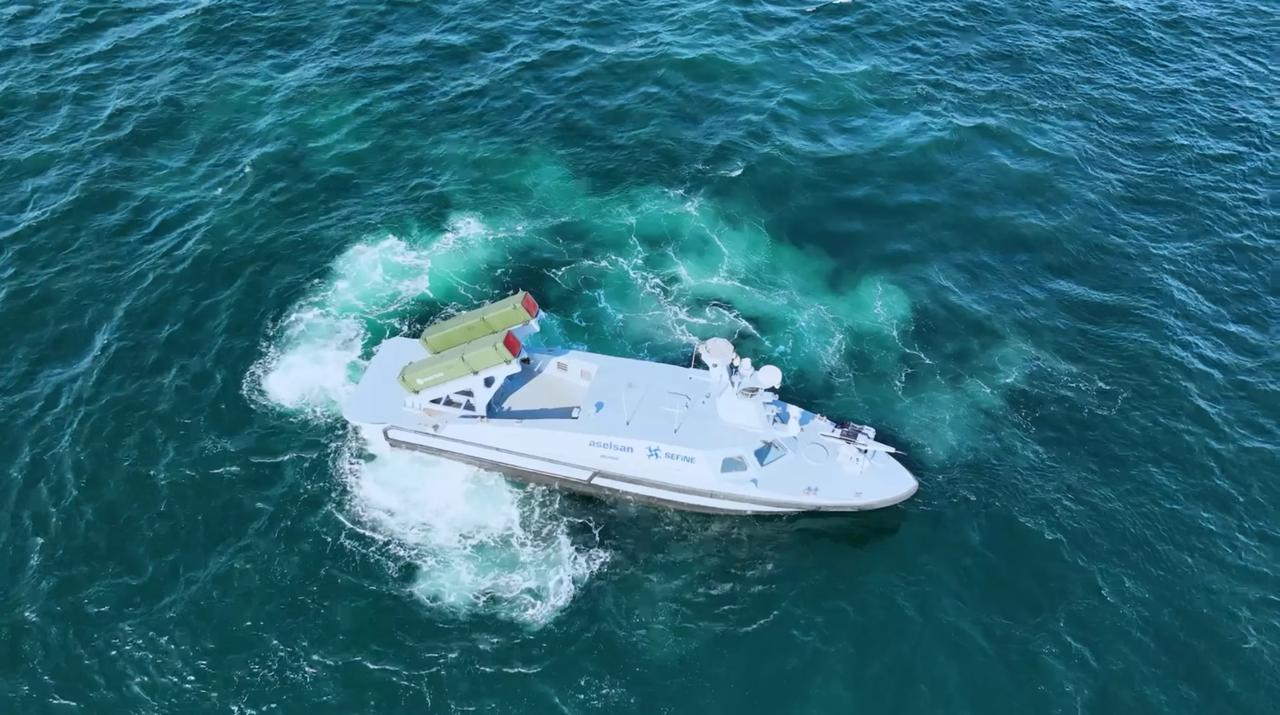Türkiye's first armed unmanned naval vehicle (SIDA), MARLIN, has acquired mine warfare capability through a software-defined warfare technology developed as part of a NATO innovation initiative.
The final testing phase of the four-stage NATO Innovation Continuum Initiative, led by NATO Allied Transformation Command (NATO ACT) and involving academia, industry, and government agencies, was conducted in Türkiye.
The tests took place at Istanbul Technical University's Maritime Faculty under the coordination of the Presidential Defense Industries Agency (SSB).
MARLIN, developed by Aselsan and Sefine Shipyard, participated in NATO exercises detecting surface-laying mines in operational scenarios.
The unmanned vessel detected and classified mines autonomously using a software-defined warfare capability added to the system.

The mine detection and classification capability was added to MARLIN through software alone, requiring no additional hardware or equipment modifications.
MARLIN previously possessed reconnaissance surveillance, electronic warfare, and surface combat capabilities. The new capability set expands the vessel's operational scope to include mine warfare missions.
The mine warfare work began by processing electro-optical sensor data from surface mines using deep learning techniques.
This approach enabled the detection and classification of surface-laying mines. Future development will involve training the model with a broader library of data.
The system will undergo improvements in fusing video transmissions from cooperating units, such as the STM Togan drone, and will continue to increase sensor diversity.

During the NATO exercise, MARLIN successfully participated in all phases of mine-laying scenarios, performing detection, classification, joint operations and cooperation missions with other units.
MARLIN's mine detection and classification capability uses an advanced deep learning model trained on a comprehensive dataset compiled by Sefine Shipyard's Strategic and Unmanned Systems Research Center (SISAM).
The dataset contains synthetic and real data with no equivalent in published literature.
The system analyzes received images and performs mapping operations to identify potential anomalies on the water surface.
When marking an "anomaly," the system compares the object's unique frequency signature, shape characteristics, and environmental context against different object classes learned from the SISAM dataset, including mines, marine debris, net fragments, floating wood and similar items.
Through this detailed comparison, the model distinguishes with high accuracy whether a detected object is a mine or a harmless item.

Mine warfare capability development will continue to advanced phases.
Türkiye plans to expand MARLIN's capabilities to detect underwater mines as well.
Simultaneously, MARLIN will gain the ability to monitor and protect critical underwater infrastructure.
These additional capabilities aim to broaden MARLIN's operational applications across the maritime domain.